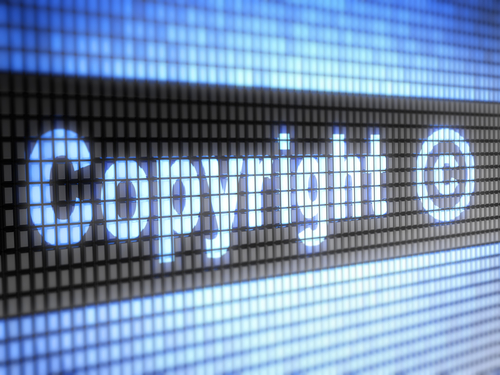 In our third and latest installment in this series, we turn our attention to copyrights, which are a critical, but often overlooked, area of intellectual property for start-ups.
In our third and latest installment in this series, we turn our attention to copyrights, which are a critical, but often overlooked, area of intellectual property for start-ups.
Copyrights protect original works of authorship. This gives a copyright holder exclusive rights to modify, distribute, perform, display, and copy the work. However, as with other forms of intellectual property, there are important things copyright holders need to know in order to best protect and utilize their copyrights.
So What is a Copyright?
Copyright protections apply to a broad range of original authored works—books, articles, videos, photos, audio recordings, paintings, architectural and technical drawings, computer software, visual art etc. Many items owned by, created for or used in a business can be subject to copyright law, including marketing materials, product packaging, web content, design marks, advertising jingles and employee training videos.
The copyright owner has the sole right to use the copyrighted material, including making and distributing copies, selling the work, or creating derivative works. No one else may use the material without the permission of the copyright holder.
It is important to note that ideas are not subject to copyright protection. This also applies to methods of operation, principles, processes and concepts. For example, the CEO of a non-profit writes an article on best practices for organizations operating in her sector and publishes it on her organization’s website. The article is protected by copyright, meaning someone else can’t simply use her text without permission. However, someone can write a new article in his or her own words on the same concepts.
Copyright infringement is when someone uses a copyrighted work without obtaining permission from the holder. “Infringement” is a subjective term, but in general, the courts use an “audience test” to determine infringement. In other words, if an average person saw both works, would he or she regard them as the same without anyone prompting them to look for similarities? If so, that’s considered copyright infringement. Simply giving credit to the copyright owner doesn’t waive copyright protection, either—control of the copyright rests with its holder.
It’s also important to note that copyright infringement still exists even if the infringer doesn’t profit from the infringement—or intends to. Again, the rights belong to the copyright holder and cannot be used without permission, even if no money is made from the infringing action.
How Do I Get Copyright Protection?
The good news is that you have copyright protection from the moment you create the work as long as it is in a fixed, tangible form. This means as soon as you put your marketing materials in a final form for printing or when your website has been finalized.
You do not need to register a work to be protected by copyright. However, registration is encouraged as it provides enhanced protection for copyright holders. This may be done online, and the Copyright Office website will walk you step-by-step through the online application. There is a modest fee for registration, typically in the $35-55 range. If you are registering photographs and they were all published in the same year, you can register up to 750 photographs and only pay one application fee.
You don’t even need to provide copyright notice. However, it still is a good idea to include a copyright notice so that the public knows that you are claiming rights in the work. The copyright notice should include the word “Copyright” or the © symbol, the date of publication and the copyright owners name. So a complete copyright notice would read as follows: “Copyright 2018 John Doe” or “© 2018 John Doe”. If the copyright is owned by a company, the notice would read as “Copyright 2018 ABC, Inc.” or “© 2018 ABC, Inc.”
In the event of a copyright dispute, a copyright registered with the Copyright Office gives the copyright holder additional legal protections. For example, a registered copyright is considered prima facie evidence in litigation, meaning the court will accept, on face value, that the copyright is valid unless it can be proven otherwise.
Registration of your work might also allow you to obtain statutory damages instead of actual damages, which could be as high as $150,000 per infringement. If you ever decide to sell your rights in the work, a buyer might be willing to pay more money if you have protected your work. If your copyrighted works are important to you, it absolutely is worth registering.
So How Long Do I Have a Copyright?
In general, works published on or since January 1, 1978 enjoy copyright projection equaling the life of the author plus 70 years under US law. Or, in the case of corporate authorship, 120 years since creation or 95 years since publication, whichever date is earlier.
If you are looking to use a potentially copyrighted work, please know that anything published before January 1, 1923 is now in the public domain. That means the copyright has expired and the work is free and clear to be used by anyone in any way.
For example, say you want to do an audiobook of Mark Twain’s classic novel The Adventures of Tom Sawyer. No problem—the novel was written in 1876, meaning it is now in the public domain. However, you could not use the song “Tom Sawyer” by the band Rush without permission of the copyright holders, as it was published in 1981 and still falls under copyright protection.
Works published prior to January 1, 1978 but after January 1, 1924 need to be checked individually to determine if they still are copyright protected. The US Copyright Act has been amended several times (most notably in 1909, 1976 and 1998), so copyright lengths can vary for works published in this time period. Don’t assume that a work is in the public domain unless you can confirm that it is!
Also, it is important to note that while copyrights have a lengthy term compared to other intellectual property protections, they may not be renewed.
Are There International Copyrights?
Unfortunately, there is no such thing as an international copyright. However, the United States is a member of the Berne Convention and the Universal Copyright Convention meaning that its members honor certain copyright rights of other Berne members’ citizens.
Click here to read our first chapter of the Intellectual Property Considerations and Guidance for Start-Ups series, which focuses on patents. And click here to read Chapter 2, which deals with trademarks.
Image Source: Deposit Photos

![[IPWatchdog Logo]](https://ipwatchdog.com/wp-content/themes/IPWatchdog%20-%202023/assets/images/temp/logo-small@2x.png)




![[Advertisement]](https://ipwatchdog.com/wp-content/uploads/2024/05/Quartz-IP-May-9-2024-sidebar-700x500-1.jpg)
![[Advertisement]](https://ipwatchdog.com/wp-content/uploads/2024/04/Patent-Litigation-Masters-2024-sidebar-last-chance-700x500-1.jpg)

![[Advertisement]](https://ipwatchdog.com/wp-content/uploads/2021/12/WEBINAR-336-x-280-px.png)
![[Advertisement]](https://ipwatchdog.com/wp-content/uploads/2021/12/2021-Patent-Practice-on-Demand-recorded-Feb-2021-336-x-280.jpg)
![[Advertisement]](https://ipwatchdog.com/wp-content/uploads/2021/12/Ad-4-The-Invent-Patent-System™.png)






Join the Discussion
One comment so far.
LazyCubicleMonkey
October 26, 2018 09:55 amSo how does life + 70 promote the creation of additional works vs let’s say a straight 20 years? Or Just life? Or life + 20? Cause it sure does seem like it prevents the public from benefiting from enjoying those works in the public domain.